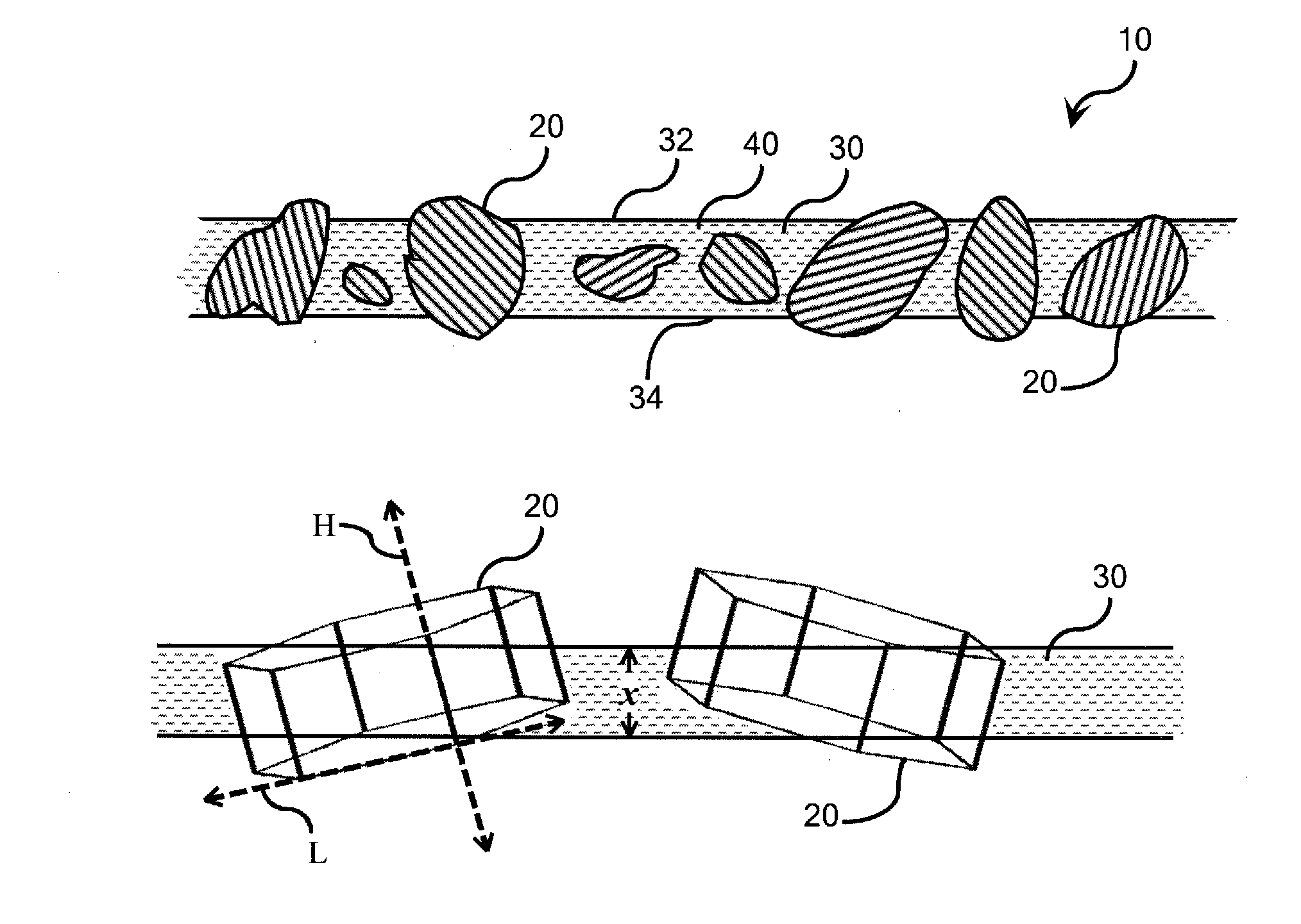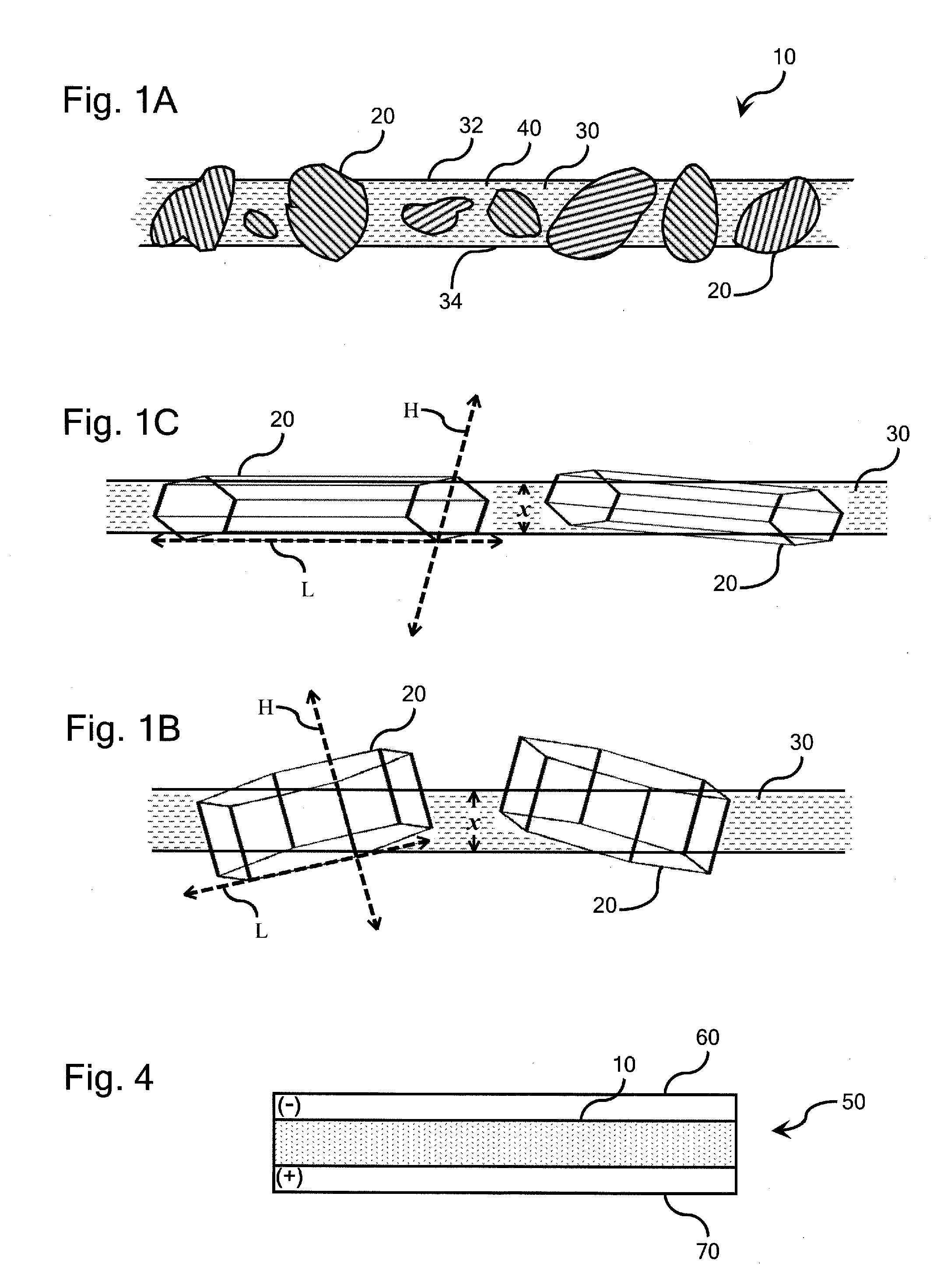Ion-conducting composite electrolyte comprising path-engineered particles
a technology of composite electrolytes and path-engineered particles, which is applied in the direction of diaphragms, primary cells, fuel cells, etc., can solve the problems of limiting difficult manufacturing and incorporation into electrochemical devices, and polycrystalline ceramic electrolytes often exhibit poor mechanical properties, etc., to achieve the limit the ionic conductivity of the electrolyte, poor mechanical properties, and practical manufacturing
- Summary
- Abstract
- Description
- Claims
- Application Information
AI Technical Summary
Benefits of technology
Problems solved by technology
Method used
Image
Examples
Embodiment Construction
[0016]Referring initially to FIG. 1A, a portion of an ion-conducting composite electrolyte 10 is illustrated schematically and comprises path-engineered ion-conducting ceramic electrolyte particles 20, a solid polymeric matrix 30, and, optionally, a fiber stiffener component 40 distributed throughout the polymeric matrix 30. The respective shapes of the path-engineered particles 20 may vary significantly from particle to particle and is not illustrated with particular precision in FIG. 1A. Rather, the path-engineered particles 20 of FIG. 1A are merely presented to show their presence in the polymeric matrix 30 and to show that their size and shape will typically vary across the composite electrolyte 30. Similarly, the size and shape of the path-engineered particles illustrated in FIGS. 1B and 1C, described in further detail below, have been intentionally simplified for illustrative purposes.
[0017]As is illustrated in FIG. 1A, the polymeric matrix defines a pair of opposite major fac...
PUM
| Property | Measurement | Unit |
|---|---|---|
| size | aaaaa | aaaaa |
| size | aaaaa | aaaaa |
| ionic conductivity | aaaaa | aaaaa |
Abstract
Description
Claims
Application Information
 Login to View More
Login to View More - R&D
- Intellectual Property
- Life Sciences
- Materials
- Tech Scout
- Unparalleled Data Quality
- Higher Quality Content
- 60% Fewer Hallucinations
Browse by: Latest US Patents, China's latest patents, Technical Efficacy Thesaurus, Application Domain, Technology Topic, Popular Technical Reports.
© 2025 PatSnap. All rights reserved.Legal|Privacy policy|Modern Slavery Act Transparency Statement|Sitemap|About US| Contact US: help@patsnap.com



